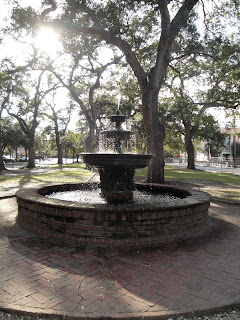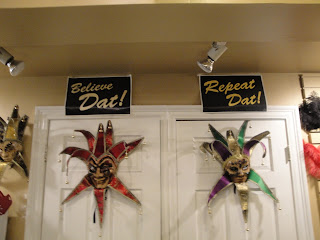Charleston is a pretty city, though I liked Savannah better because its historic district is concentrated within one square mile, including 24 historic squares with statues, fountains, live oaks and Spanish moss. But Charleston ain't bad.
This is one of the cannons that probably fired on Fort Sumter in Charleston Harbor, starting the American Civil War.
Jermel President and his son, Jermel, Jr., at his aunt's holistic soulfood cafe, Alluette's. My fried fish and collards were superb! When I asked him about racism in Charleston, Jermel said, "There is no black or white, there's one situation. And if you don’t understand that, you get caught up in that. If it rains tomatoes, we’ll make Bloody Mary's. Whatever goes on you just have to be effective and deal with it." He played pro basketball and now coaches and runs a non-profit, DAE Foundation.org, which works with student athletes, helping with the transition from high school to college.
A T-shirt in a Charleston shop window that shows the Native American perspective on the Euro-American invasion from the East.
My quest to bond better with dogs on this trip was rewarded by Saatchi, who loved to hang out in the Charleston hostel. Saatchi is part Havana Silk Dog and part Shih-Tzu. She was independent-spirited, like a cat, which endeared her to me.
Now there's a bond! That's Saatchi with her master, Nicole, who ran the hostel.
Multi-million-dollar homes on the waterfront of Charleston.
The front door to the Aiken-Rhett house, formerly the luxurious residence of slave-owning whites. Behind the door is a marble staircase with wrought iron bannisters and mahogany trim. I wasn't allowed to take pictures indoors.
This is the staircase for slaves to enter the house with food, clean laundry, and whatever else the Aiken family wanted.























































